What is the difference between Apple Vision Pro and Meta Quest 3? Which one should I buy?
Part of the reason is to avoid comparisons to existing headsets, but it turns out that the Vision Pro compares to the Meta Quest 3 - a VR headset with mixed reality capabilities due for release in 2023 that retails for around $500 - are actually quite similar.
Obviously, a device that costs 7 times as much would be better in every way, but these two devices have more similarities than you might think.
Control handle
What's unique about Apple Vision Pro is that you don't need a controller to navigate the VR or AR space. Instead, Apple designed the Vision Pro to be controlled by your eyes, hands, and voice.

Meta Quest 3 comes with ergonomic controllers for interaction as you immerse yourself in a VR or AR environment. If you're playing a game that involves holding a gun or sword, these are better than just using your hands in every way. However, put the controller aside and the headset will recognize your hand, allowing you to explore using pointing and pinching gestures. For general UI interactions, this works great.

In every way, the Apple Vision Pro's hand recognition is superior to the Quest 3. It can see your hands when they're not directly in front, thanks to a tracking camera with a wider view , higher resolution, leads to more precise interaction.
However, you don't have many choices on Apple Vision Pro. You have to use your hands as there are no controllers - even if a controller would be faster or more accurate in certain situations. In fact, some people have reported that playing games on the Vision Pro is complicated due to the processing required to accurately track hand gestures; there's noticeable lag compared to the Quest 3. This could be fixed if Apple adds a less accurate gaming mode.
Another control limitation of Apple Vision Pro is that clicking a button requires you to look directly at it. This ensures even more precision, but it's quite an unusual behavior. In Quest 3, you can tap buttons while your gaze is elsewhere.
Specifications
Weight
Although the Apple Vision Pro headset weighs slightly more than the Quest 3, the overall weight is even higher because that figure does not include the battery pack. The Quest 3's battery is built into the front of the headset, but if you need more power, you can attach another battery to the back of the strap, helping to distribute the weight more evenly.
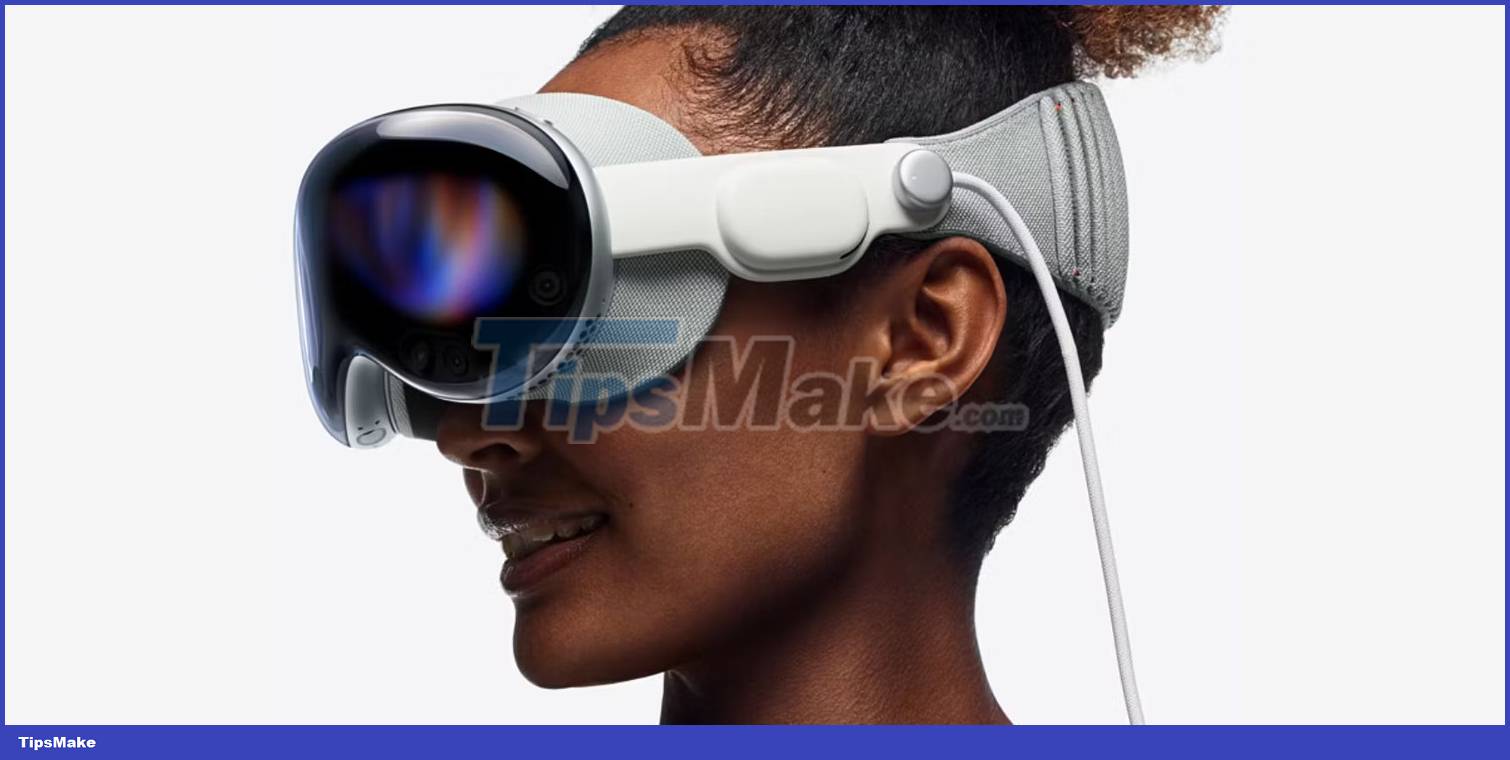
It's no surprise that the Vision Pro is significantly heavier; it has multiple glass parts inside and out, as well as another display on the front. Any additional cabling on a VR headset is inconvenient and detracts from the experience. Quest 3 is completely standalone - or can be controlled wirelessly with a PC for enhanced graphics.
Battery life
Both the Apple Vision Pro and Quest have about 2.5 hours of battery life, although the exact number will vary depending on how active the app you're running is, volume, screen brightness, etc. Normally, a more powerful chip in the Vision Pro would require more power to run, but it is so efficient that it can perform many times faster than the Quest 3's SoC with the same amount of power.
Screen quality and FOV
There are very few comparisons to be made when it comes to resolution; it's similar to going from HD to 4K. According to iFixit's teardown, the Apple Vision Pro has dual micro-OLED displays running at a resolution of 3,660 x 3,200, with a screen size of about 0.95 inches, delivering an incredible 3,386 PPI (pixels per inch) density. surprised. The Quest 3 uses dual LCD screens at a resolution of 2,064 x 2,208 per eye but with a larger screen, delivering 1,218 PPI. That's a huge leap in clarity and the highest pixel-per-inch density ever seen in any device.
A better metric to use is PPD, or pixels per degree. PPD is a function of field of view - the more of the virtual world that can be seen, the lower the number of pixels per degree will be for a similar resolution. Vision Pro PPD is estimated at approximately 34; Quest 3 is about 25.
On the other hand, field of view - i.e. the area of vision in which you can display something (imagine a screen on your desk that you can move closer or further away, thereby increasing or decreasing the field of view yours) - in fact, the Apple Vision Pro is slightly lower than the Quest 3. It's not a huge difference, and measuring FOV is not an exact science, but reports suggest that FOV slightly lower vertical.
Significantly increasing the field of view requires major compromises elsewhere, and complex lens systems have their own shortcomings, so it's unlikely to see much improvement here for a while. However, both the Quest 3 and Apple Vision Pro offer a vast improvement over lightweight AR glasses like the Microsoft HoloLens.
Finally, the Quest 3 can run those displays at up to 120Hz, while the Vision Pro maxes out at 90Hz. Most apps don't (or rather can't, due to processing power requirements) use the Quest 3's full refresh rate, so this spec is somewhat controversial.
Of course, the virtual screen on the Vision Pro (or Quest 3) still can't compete with a real screen. While you can get 4K resolution on the Vision Pro, that's the overall resolution for your entire view. Placing the virtual screen in a small part of it means that the actual resolution of this virtual screen will be significantly lower. If your job requires you to view something in high resolution, I'm afraid you'll need to use a physical screen for now.
CPU and RAM
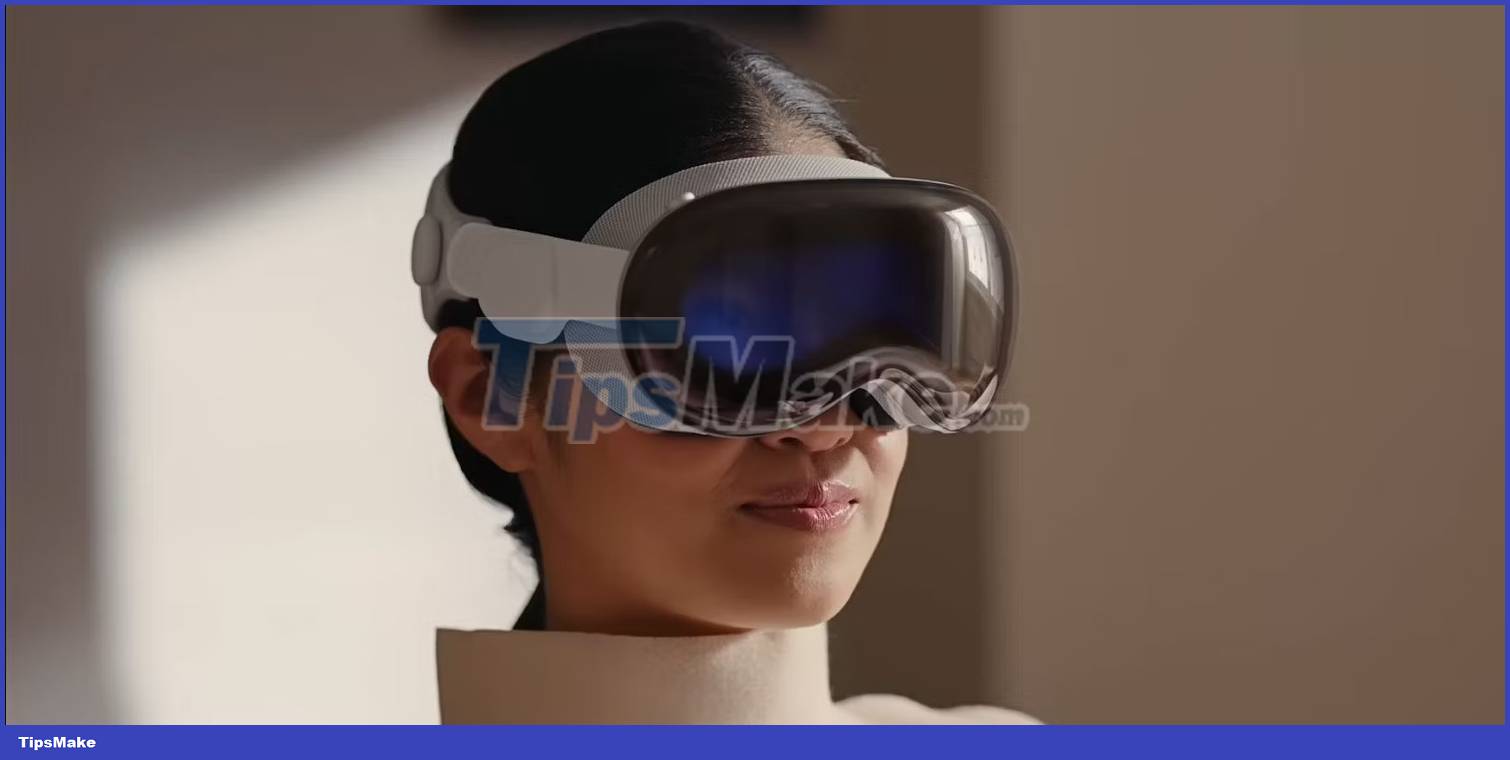
Apple Vision Pro has the Apple M2 processor, which you can find on MacBook Air, MacBook Pro, and iPad Pro devices. But to process information from the camera and send it back to the screen with minimal latency, Apple Vision Pro uses an additional chip, named R1.
Meta Quest 3 is equipped with Qualcomm Snapdragon XR2 Gen 2 chip. There is no comparison in terms of processing power with Vision Pro; because it's like comparing a desktop computer to a smartphone.
The Apple Vision Pro has 16GB of RAM, while the Meta Quest 3 offers 12GB, but this spec doesn't mean much for overall performance.
This table summarizes some key specifications.
| Apple Vision Pro | Meta Quest 3 | |
| Price | From $3,499 | From $499 |
| Processor | M2 chip, R1 chip | Snapdragon XR2 Gen 2 chip |
| RAM | 16GB | 12GB |
| Memory | 256GB/512GB/1TB | 128GB/512GB |
| Screen type | Micro-OLED | LCD |
| Screen resolution | 3,660 x 3,200 per eye | 2,064 x 2,208 per eye |
| Refresh rate | 90Hz | 120Hz |
| Weight | 600-650g | 550g |
Augmented Reality and Passthrough
Vision Pro's main selling point is that you can overlay applications onto your real-world view. The most important part of this is a good quality passthrough camera system. Unlike AR glasses that project additional information onto a transparent lens, allowing you to continue seeing the world, both the Vision Pro and Quest 3 provide a passthrough camera view for you. Until Vision Pro came along, the Quest 3 was the passthrough camera king for AR. But Vision Pro has a better camera system, faster processing and therefore lower latency until the image reaches the internal screen. That means your view of the outside world is sharper and less delayed.
Since both systems rely on small camera sensors, low light situations severely degrade transmission quality, increasing noise. Both the Quest 3 and Vision Pro's passthrough cameras work best in well-lit areas. The other promise of spatial computing is that you can leave Windows and applications in a specific place and return to them later. On Vision Pro, this feature works as described; but some users even reported losing app windows because they couldn't remember where they placed them.
These features were promised on the Quest 3 but have yet to materialize. Currently, you're limited to three app windows side by side, and even then, it's still not true multitasking, and the Quest 3 doesn't have the kind of desktop-like operating power that the Vision Pro does. Apple Vision Pro is more than just a standalone headset; it has about the same power as a good laptop, so it has no problem running all kinds of productivity apps.
Supports operating systems, applications and games
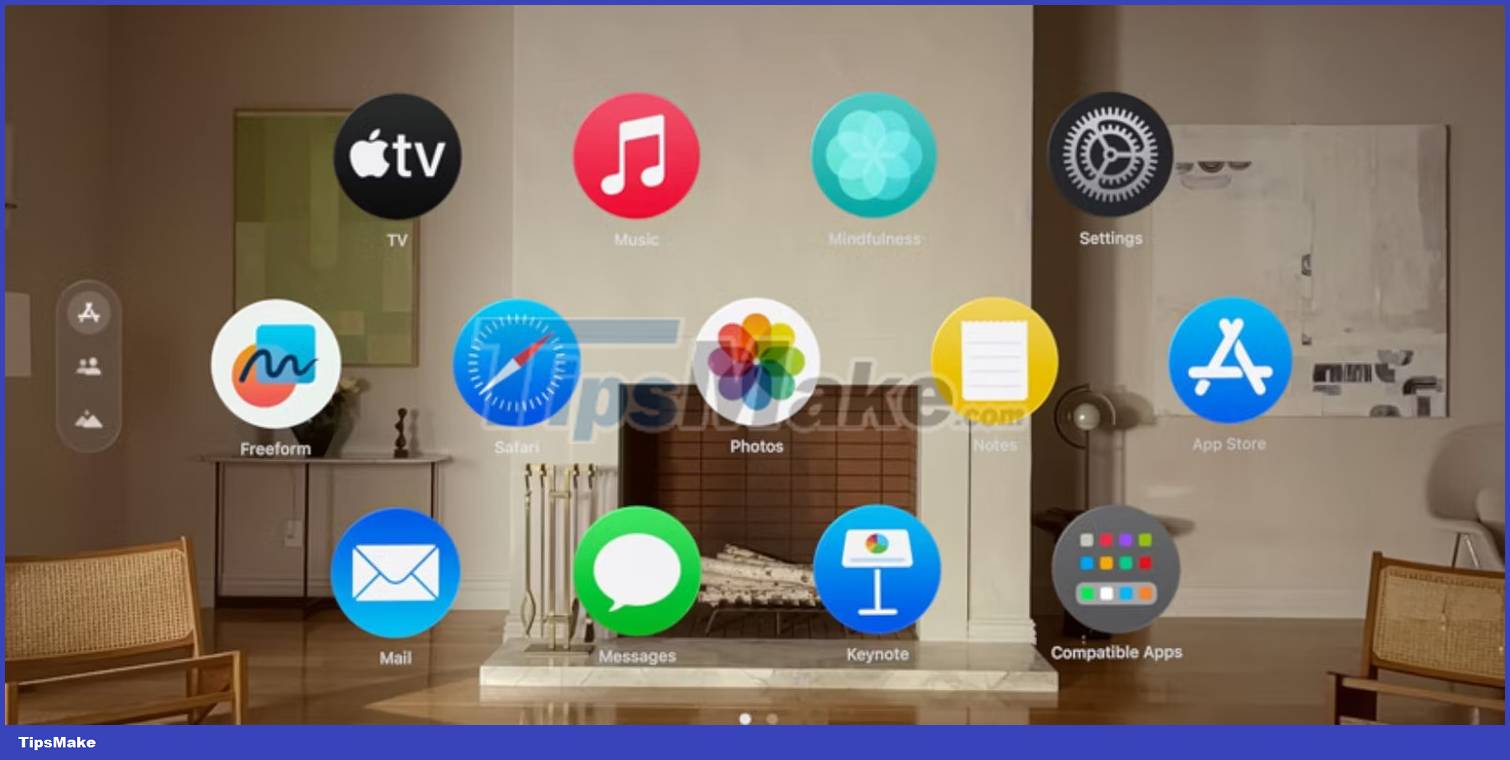
In their current state, the software offerings of the Quest 3 and Vision Pro differ significantly.
Apple Vision Pro uses a new operating system called VisionOS that allows you to interact with familiar iOS and macOS apps in mixed reality environments. Additionally, you can watch movies (although the Netflix and YouTube apps are absent), browse the Internet, and work using the virtual keyboard. You open multiple applications and bring your existing laptop screen into the virtual world. It's your private computing space with hundreds of virtual screens. However, many users say watching vivid movies is their favorite experience on Vision Pro.
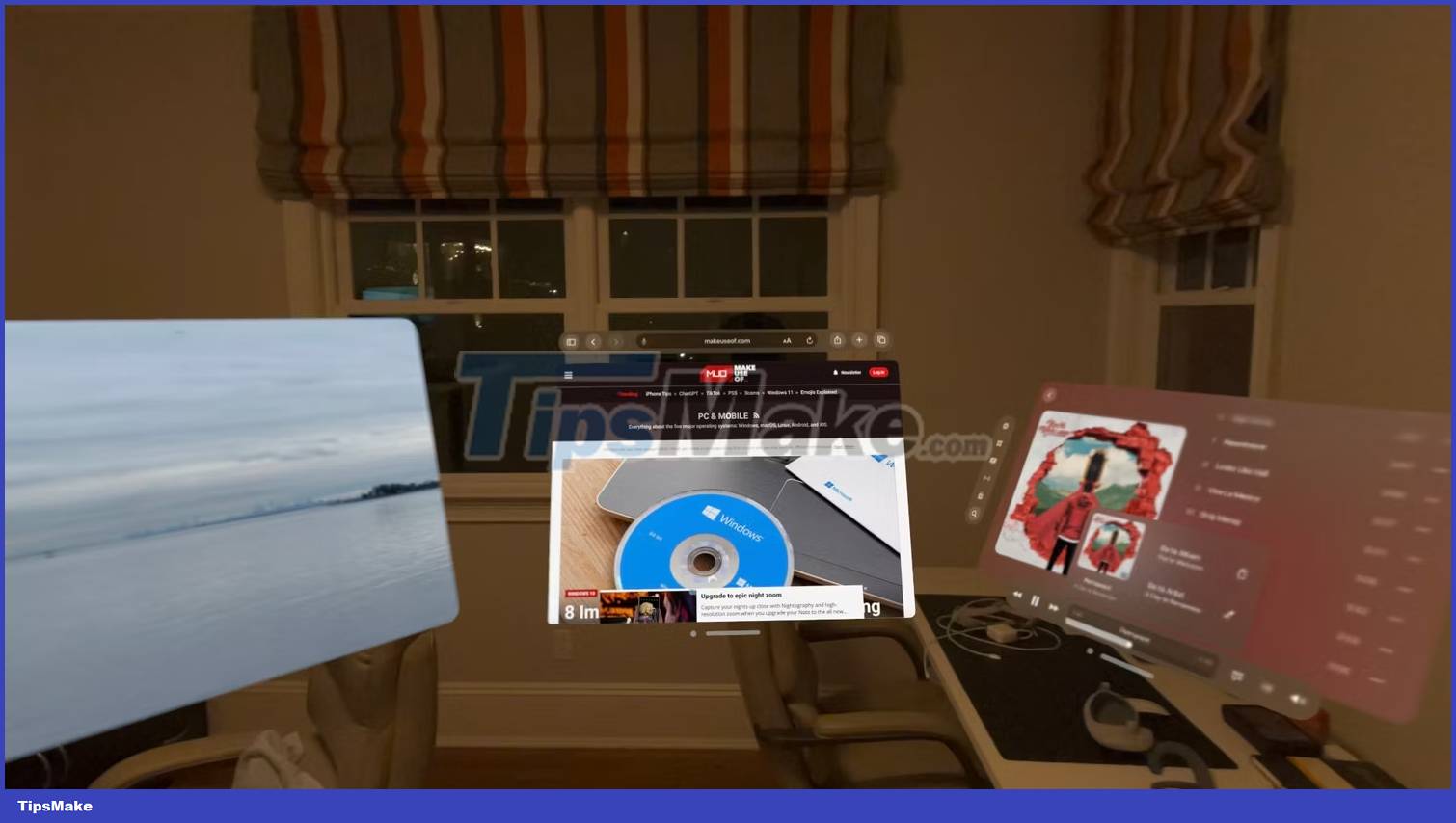
Meta Quest 3 offers some of the same features but it runs on a heavily customized version of the Android operating system. For example, you'll find some great engaging movie players - even ones where you can enjoy movies with other virtual friends - but it's really not a desktop replacement. .
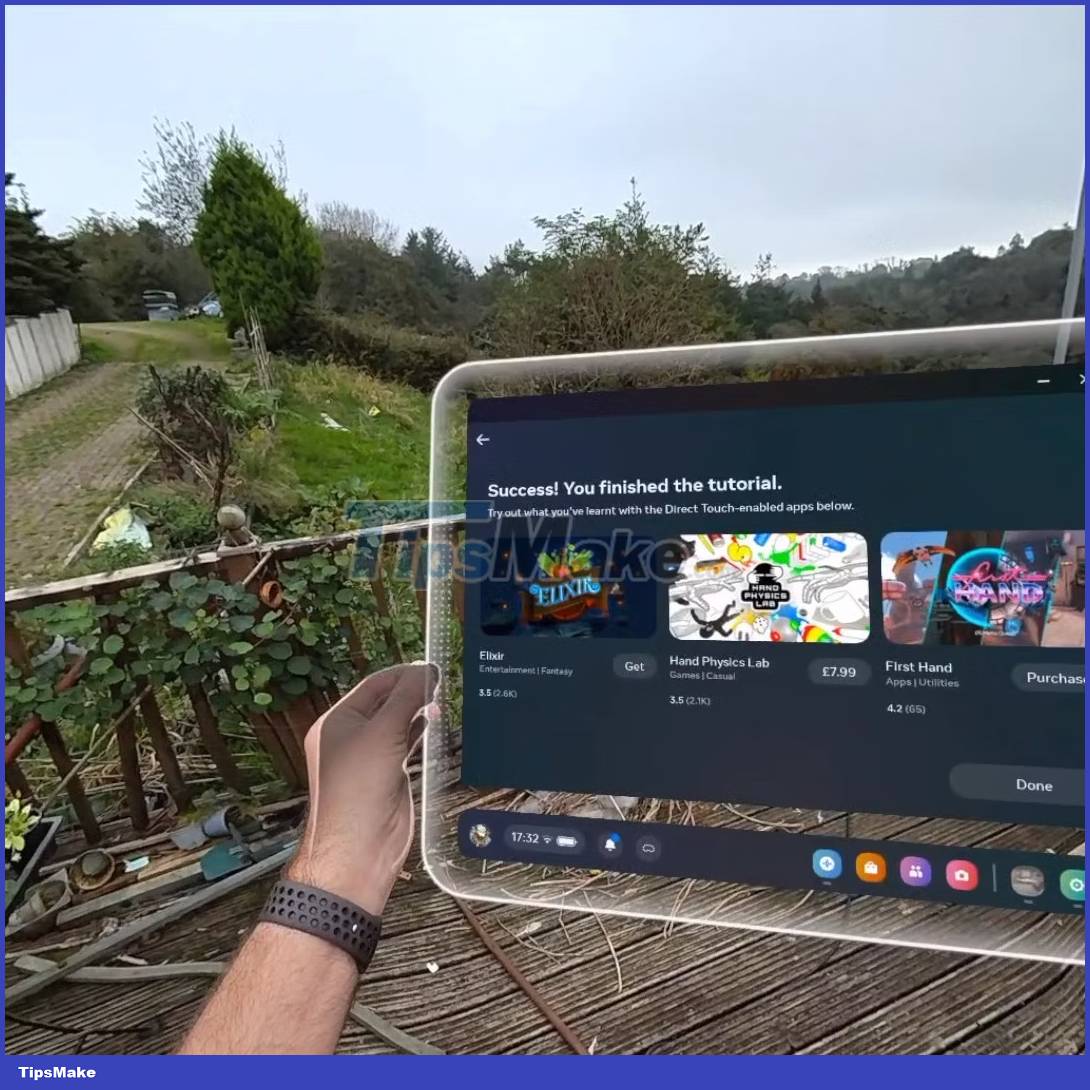
However, Meta Quest 3 is primarily designed to deliver an immersive virtual reality gaming experience with haptic feedback controllers that make you feel like you're touching something that isn't there, like such as holding a virtual gun or sword. Meanwhile, the Quest 3's AR features are more about convenience than productivity, such as helping you see your phone screen or checking to see if the cat you just stepped on is still breathing.
You can also play games on Apple Vision Pro by connecting a Bluetooth gamepad. The lack of a dedicated controller limits the VR games available on the Vision Pro. Of course, it's possible that Apple will release a controller in the future, but that doesn't seem to fit with its vision for the device.
Comfort level
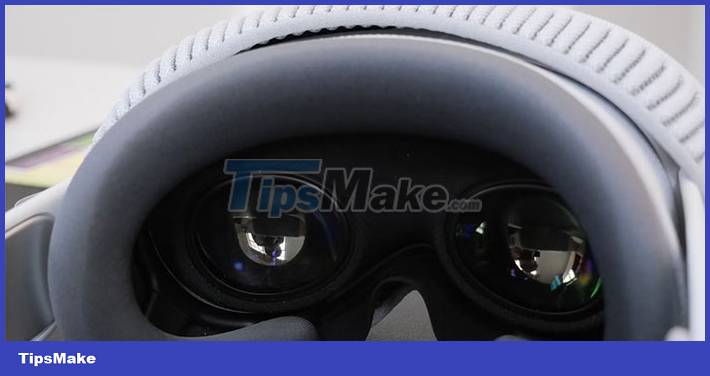
Apple Vision Pro has a single padded head strap on the back. While the Meta Quest 3 comes with a basic head strap and an additional strap on top, which is more convenient for weight distribution and avoiding pressure on the eyes. Early Vision Pro users noted that weight distribution was the device's biggest flaw; makes wearing it uncomfortable for long periods of time.
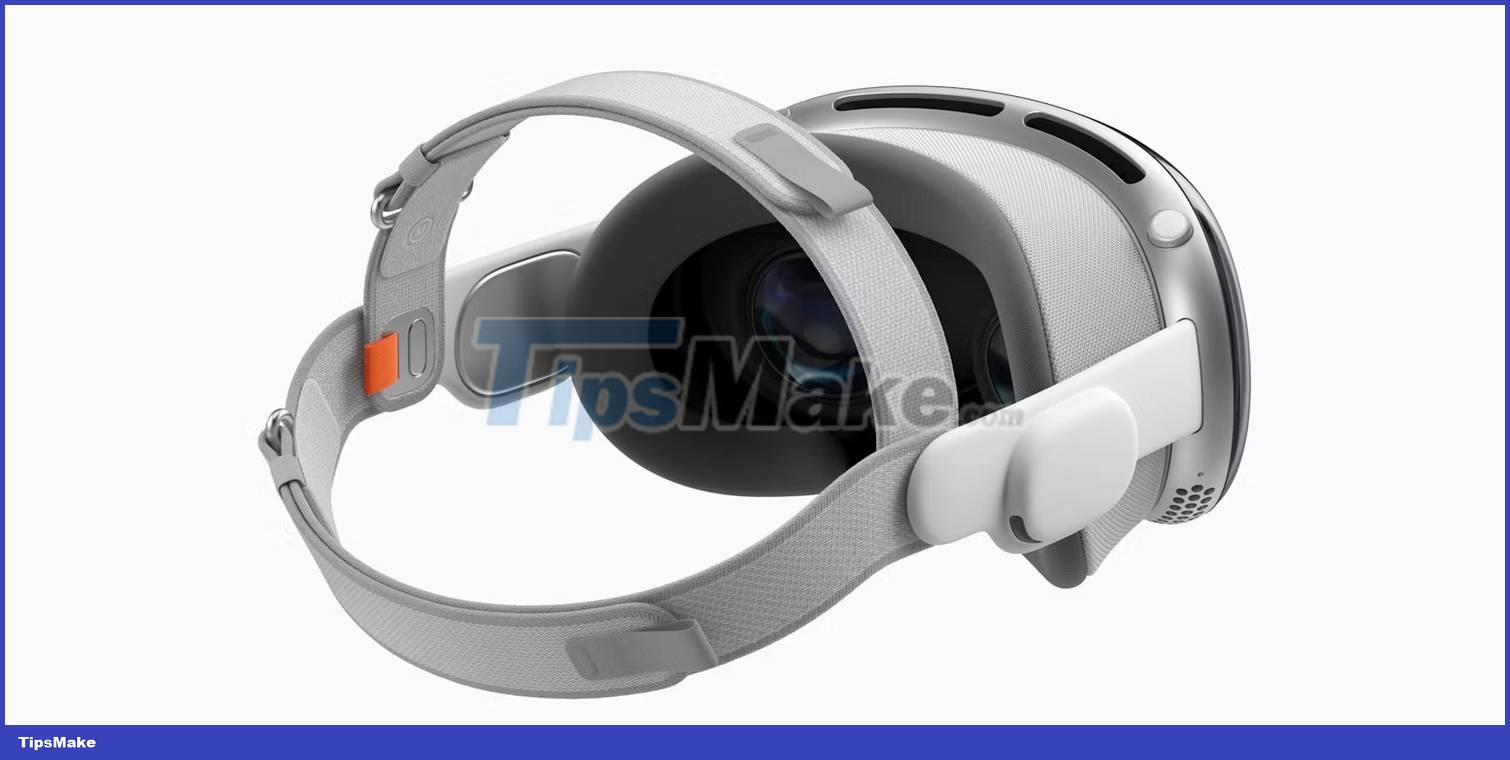
However, both headsets have the option to upgrade or modify the strap, such as the dual strap pictured above. The Quest 3 accessory ecosystem is naturally more developed at this point, but over time we'll see more comfortable alternative straps for the Vision Pro.
Price
Apple Vision Pro starts at $3,499, making it the most expensive VR/AR headset on the market in a long time. Its price is greatly influenced by its micro-OLED, outward-facing screen, extremely powerful processing chip, and multiple cameras and sensors to track your eyes and hands. But no matter how technically impressive they are, there's no denying it's a lot of money.
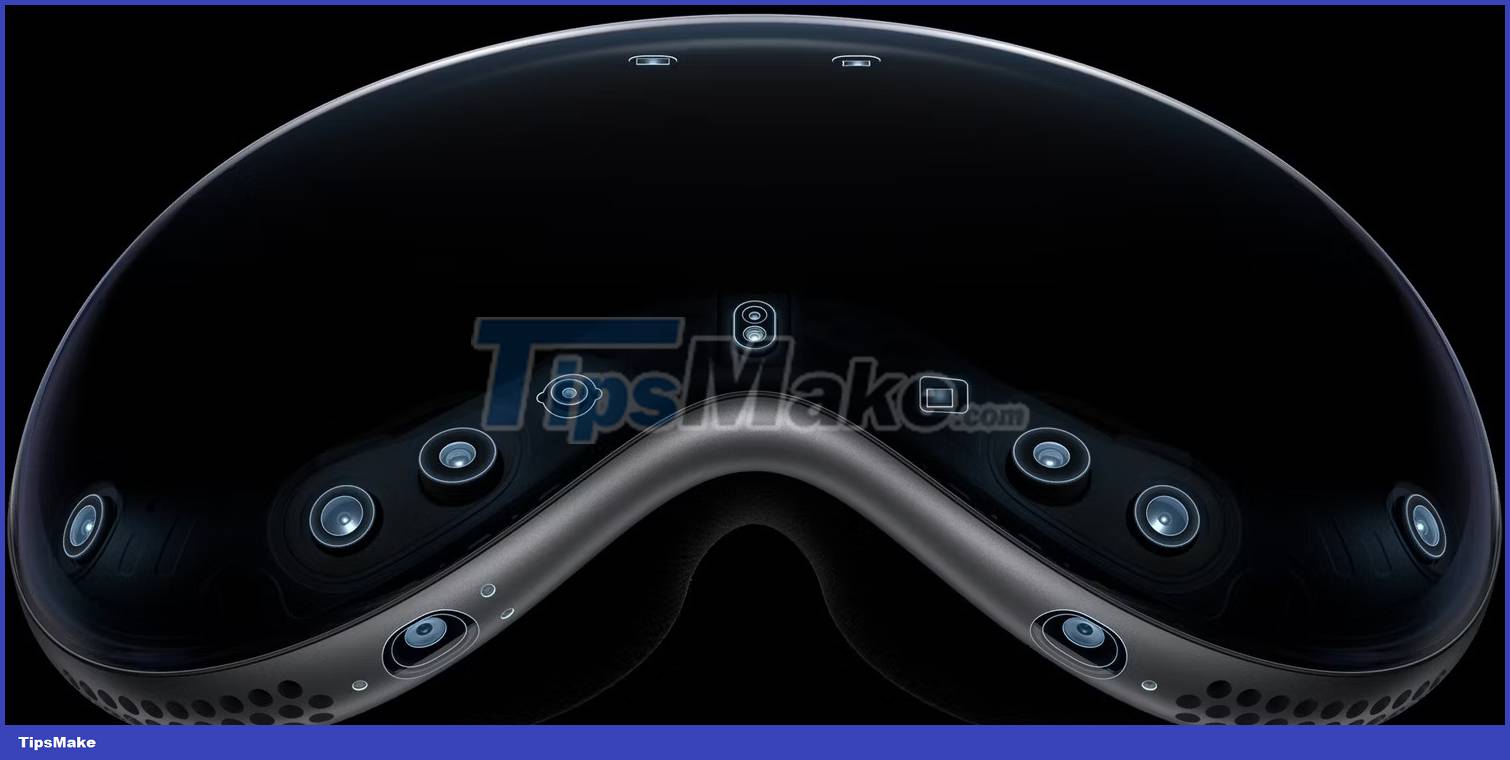
For comparison, the Meta Quest 3 with 128GB of storage starts at $499. You can buy 7 for the same price as one Vision Pro and enjoy immersive virtual reality gaming with your whole family and neighbors.
Should I buy Apple Vision Pro or Meta Quest 3?
It might seem like an unfair comparison - especially with a price difference of several thousand dollars - but the Apple Vision Pro and Quest 3 have more in common than you might think.
The Vision Pro is the device for users who want to invest in the Apple ecosystem - or for developers who want a head start on what could truly be the next computing paradigm. Meanwhile, Meta Quest 3 is an immersive virtual reality headset with many gaming, lifestyle and entertainment applications available at a much more affordable price.
The choice is clear; But if you have a "huge" income 10 times higher than your current income, it will certainly be difficult to avoid temptation.
You should read it
- Apple Vision Pro achieved impressive results in durability tests
- What you need to know about app development for Apple Vision Pro
- Pokémon Quest officially has a mobile version, free of charge
- Tips to improve your base in Dragon Quest Builders 2
- Instructions for using Imagine with Meta AI to create images from text
- Instructions for doing the map quest The Skeld in Among Us
- How to play Dragon Quest Tact for newbies
- How to use Zoom on Apple Watch for people with low vision
May be interested
- Meta's new Horizon OS will lead to more VR headsets in the future
 there are only a handful of companies involved in virtual reality at the moment, with apple and meta being the biggest names. but with the latest announcement from meta, it seems things are about to change.
there are only a handful of companies involved in virtual reality at the moment, with apple and meta being the biggest names. but with the latest announcement from meta, it seems things are about to change. - Steve Jobs has a vision, but Bill Gates is the one to do it!
 steve wozniak, co-founder of apple, talked about the difference between the vision of the person he founded and apple and bill gates, the world's no. 1 technology billionaire.
steve wozniak, co-founder of apple, talked about the difference between the vision of the person he founded and apple and bill gates, the world's no. 1 technology billionaire. - Tips to improve your base in Dragon Quest Builders 2
 dragon quest builders 2 is part of the beloved rpg series dragon quest. it brings out all the visual flair of dragon quest with a combination of minecraft thrown in for the best effect.
dragon quest builders 2 is part of the beloved rpg series dragon quest. it brings out all the visual flair of dragon quest with a combination of minecraft thrown in for the best effect. - Change this setting immediately if you use Meta AI!
 innocuous conversation with meta ai about your job, health, or legal issues? chances are it was public.
innocuous conversation with meta ai about your job, health, or legal issues? chances are it was public. - Instructions for doing the map quest The Skeld in Among Us
 the skeld map quest, finding out and doing the quests will sometimes take time. but don't worry because here tipsmake will guide you through the quest in the skeld map.
the skeld map quest, finding out and doing the quests will sometimes take time. but don't worry because here tipsmake will guide you through the quest in the skeld map. - It will take Meta many years to monetize Generative AI, but what about Apple?
 quite a few tech companies have invested in ai over the past two years, and there are rumors that apple will soon bring new ai-based tools to iphone users in ios 18.
quite a few tech companies have invested in ai over the past two years, and there are rumors that apple will soon bring new ai-based tools to iphone users in ios 18. - This is the reason many people refuse to use Meta AI on any Meta platform!
 integrating meta's ai features across the company's platforms appears to be the final step in making ai accessible to billions of people worldwide.
integrating meta's ai features across the company's platforms appears to be the final step in making ai accessible to billions of people worldwide. - How to play Dragon Quest Tact for newbies
 after reaching 10 million impressive downloads in japan, the jrpg dragon quest tact game has landed globally on ios and android.
after reaching 10 million impressive downloads in japan, the jrpg dragon quest tact game has landed globally on ios and android. - Instructions for using Imagine with Meta AI to create images from text
 imagine with meta ai is meta's ai image creation tool, helping users create photos with descriptive words.
imagine with meta ai is meta's ai image creation tool, helping users create photos with descriptive words. - How to use Zoom on Apple Watch for people with low vision
 if you have trouble viewing content on apple watch, you may want to try the zoom feature. this is really a useful tool for users with vision impairment or poor vision.
if you have trouble viewing content on apple watch, you may want to try the zoom feature. this is really a useful tool for users with vision impairment or poor vision.










 How to create your own custom Android mascot
How to create your own custom Android mascot Cling Band: Samsung's bracelet-shaped smartphone
Cling Band: Samsung's bracelet-shaped smartphone Meta and LG will cooperate to develop a high-end virtual reality headset model, expected to launch in early 2025.
Meta and LG will cooperate to develop a high-end virtual reality headset model, expected to launch in early 2025. How to tidy up Facebook, YouTube, Gmail interfaces
How to tidy up Facebook, YouTube, Gmail interfaces How to install NVM on Debian
How to install NVM on Debian How to use Canary Tokens to keep hackers from accessing your files
How to use Canary Tokens to keep hackers from accessing your files